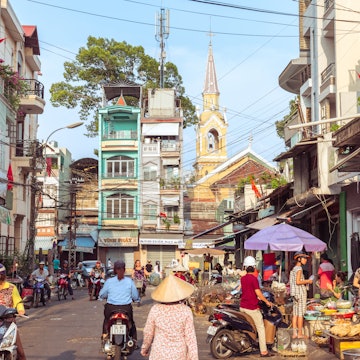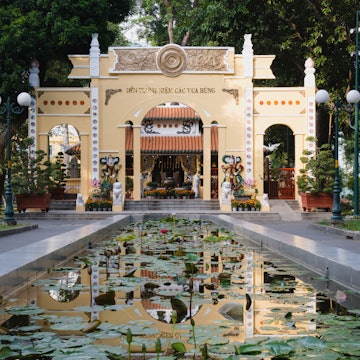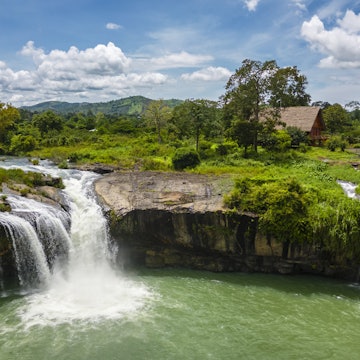

Phu Quoc, Vietnam. Nguyen Quang Ngoc Tonkin/Shutterstock
Whether you’re planning to bask on the beaches, trek through the jungles, wander historic towns or set up as a digital nomad in Hanoi, you may not need a visa at all for a short visit to Vietnam. Citizens of many countries can now visit the country visa-free for up to 45 days, while travelers from elsewhere can take advantage of an expanded e-visa system. Here’s what you need to know about Vietnam’s entry requirements.

Who needs a visa to visit Vietnam?
Whether or not you need a visa to visit Vietnam will depend on where you live and how long you’re planning to stay. Through August 14, 2028, citizens of the following countries can stay in Vietnam for up to 45 days without a visa: Belgium, Bulgaria, Croatia, the Czech Republic, Hungary, Luxembourg, the Netherlands, Poland, Romania, Slovakia, Slovenia and Switzerland. Visitors from these countries who wish to stay longer will require a 90-day visa, as will all tourists from other countries.
How do I get a visa?
There are three ways to obtain a visa. You can apply the old-fashioned way via the Vietnamese embassy or consulate in your home country; you can apply for a visa on arrival via a Vietnamese visa agency; or you can apply for an e-visa online before you travel.

How long are Vietnam visas valid?
Standard tourist visas are valid for 90 days, with multiple entries allowed. Visas can be extended within Vietnam for an additional fee (see below). For visas for business trips, contact your local Vietnamese embassy or consulate – there’s a list of overseas missions on the website of the Ministry for Foreign Affairs. Digital nomads generally travel on tourist visas.
What are the special visa rules for Phu Quoc Island?
Travelers visiting Phu Quoc – Vietnam’s best-loved tropical island – can stay for up to 30 days visa-free, on the condition they do not visit other parts of the country. This applies even if you don’t come from an otherwise visa-exempt country, but you must enter Phu Quoc by air.
How do I apply for an e-visa?
The government’s slightly confusing e-visa portal is the place to apply for an electronic visa. These visas are valid for 90 days and allow a single entry or multiple entries. You can enter via any approved air, land, or sea border, but the port of entry must be listed on your application. The process can take up to 2 weeks.
When applying for a Vietnam e-visa, you’ll need to have a few essentials ready. Make sure your passport is valid for at least six months beyond your planned stay, and have a clear scan of the data page saved as a JPG file. You’ll also need a recent passport-style photo (4cm by 6cm, white background, no glasses) in JPG format.
In addition, you’ll be asked to provide a temporary address in Vietnam – this can be the name of your hotel, a homestay or the address of family or friends – along with your intended entry and exit dates and the port you plan to use to enter and leave the country (choose from the approved list of border points).
How do I apply for a visa on arrival?
If you fly into Vietnam and land at Tan Son Nhat International Airport in Ho Chi Minh City, Noi Bai International Airport in Hanoi or Danang International Airport in Danang, you can apply for a visa on arrival via an online visa agency such as Vietnam Visa, but this is a more expensive and complicated option than the e-visa.
In fact, this is a two-part process. As well as paying a fee for the online application, you’ll need to pay a second fee on arrival in Vietnam for the visa to be physically added to your passport. The online application takes two working days to process, but you can also pay extra for an expedited one-day or four-hour service.

Can I extend my Vietnam visa while in the country?
It isn’t too tricky to extend a tourist visa while in Vietnam, but you’ll need to enlist the help of a local visa agency. The procedure can take up to a week, and you must apply before your original visa expires. It may be possible to get an extension of 15, 30 or 60 days, depending on the visa you currently hold.
Fees vary from agency to agency and depend on the duration of the extension. In practice, extensions are easiest to arrange in Ho Chi Minh City, Hanoi, Danang and Hue. Note that additional fees apply if you apply to extend your visa in a different location to the city where you first arrived in Vietnam.
What documents do I need for a Vietnam visa?
Whether you apply online or in person at your local embassy or consulate, your passport should be valid for at least six months after your proposed date of exit from Vietnam. You can enter on or after the date of entry you declare on the application form, but you must still exit by the expiry date printed on your visa.
If you apply in person or by post, you’ll also need to provide some passport photos with your application form. If you apply online, you’ll need high-quality digital passport photos; for a visa on arrival, bring two 4cm-by-6cm photos to hand over when you pay the stamping fee.
How much does a Vietnam visa cost?
For a standard single entry 30-day e-visa, the fee is $25; multiple entry is $50. The same fees apply for visas from consulates or embassies.
To get a visa on arrival, you must first pay a fee to a visa agency for a "visa pre-approval letter." For a single-entry visa, the cost is approximately $17 for 30 days and $25 for 90 days. For a multiple-entry visa, the fee is around $20 for 30 days and $65 for 90 days.
You’ll need to pay a second fee, known as a "stamping fee", when you reach Vietnam, using foreign currency. This costs $25 for a single-entry visa and $50 for a multiple-entry visa.
















